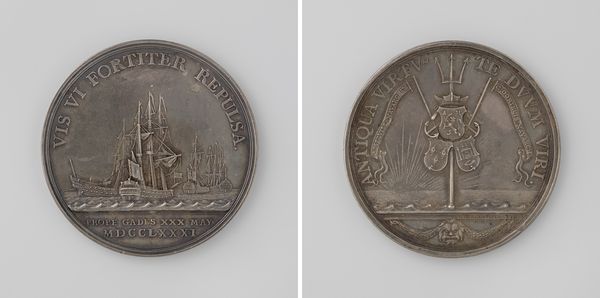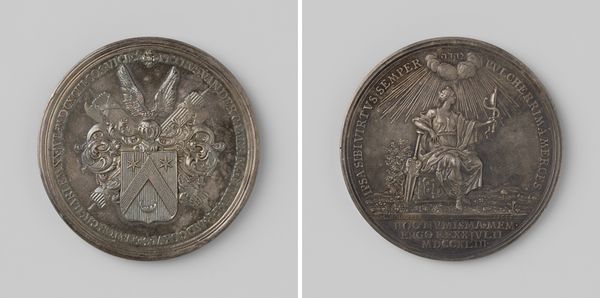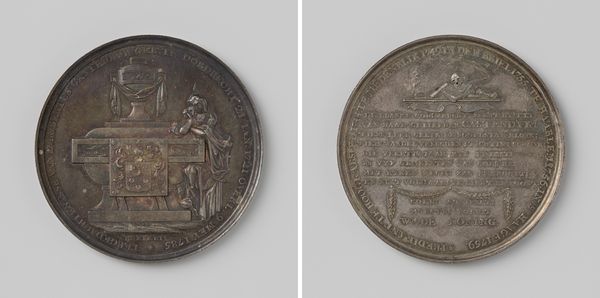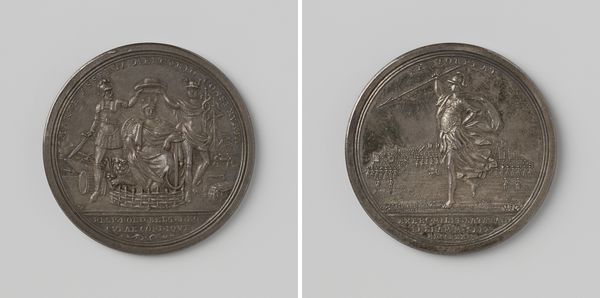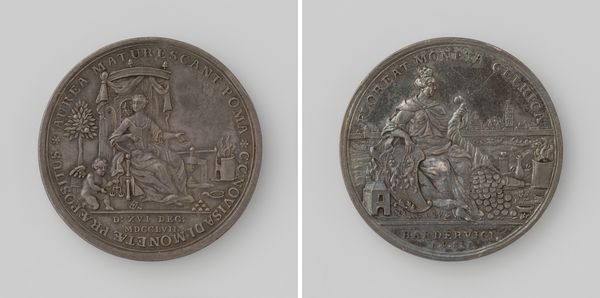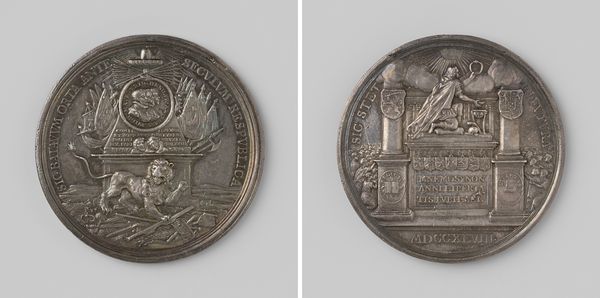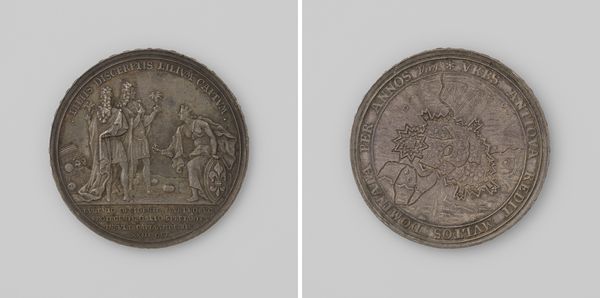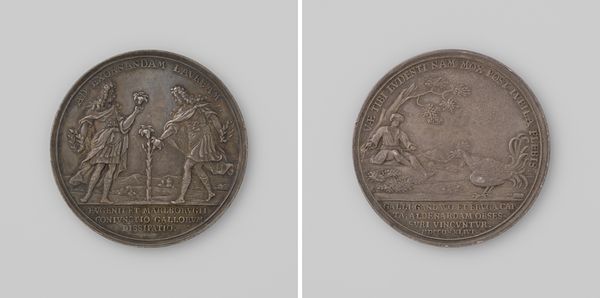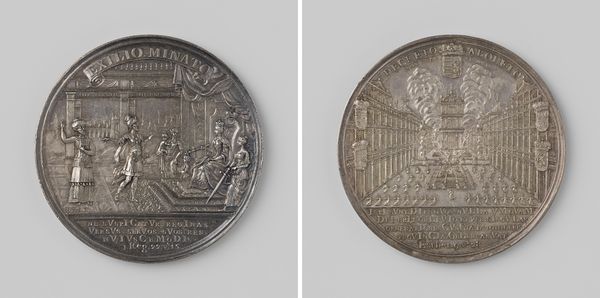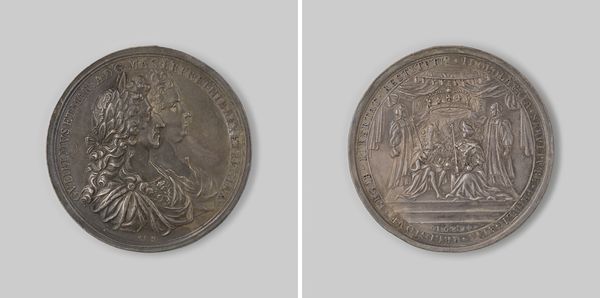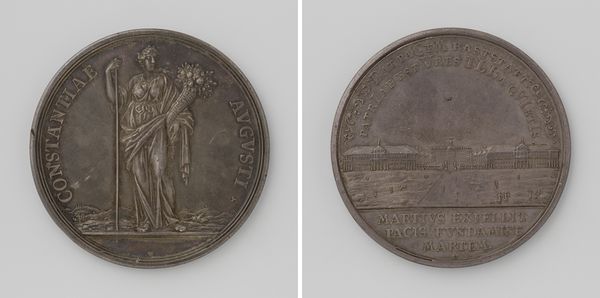
print, metal, relief
#
portrait
#
baroque
# print
#
metal
#
sculpture
#
relief
#
history-painting
#
statue
Dimensions: diameter 4.9 cm, weight 42.27 gr
Copyright: Rijks Museum: Open Domain
Editor: Here we have a metal print from 1717 entitled "Tweede eeuwfeest van de Reformatie." The detail for such a small object is astounding. It definitely speaks to the historical importance of the event. What kind of statement do you think this artwork is making about the Reformation? Curator: Well, consider the context: this piece was created for the two-hundredth anniversary. The very act of commemorating the Reformation like this indicates a specific public desire to cement its legacy. How does that act of memorialization inform your reading of its imagery? Editor: It seems pretty celebratory, almost propagandistic, emphasizing the triumph of Protestantism, but also maybe solidifying the beliefs of people at the time. Is it common for medallions to have such an overt message? Curator: Commemorative medals like this served as powerful tools for shaping public memory and promoting particular ideologies. The figures depicted and the inscriptions chosen all contribute to a very carefully constructed narrative. Look at the side depicting Luther—what does his portrayal tell you? Editor: He’s shown with a book and candle, trampling a dragon? That's definitely presenting him as a powerful, almost heroic figure. But the other side is a bit harder for me to interpret... Curator: The second side signifies deliverance from blindness, the “light” being shed on the truth. Considering its intended audience, the elite and educated class of the time, it serves not just as a celebration, but also as a form of reinforcing group identity and values. It says, "This is who we are, this is what we believe.” Editor: That makes perfect sense. It's interesting how a seemingly small object can carry so much cultural weight. I’ll definitely be more attentive to context with works like these! Curator: Exactly. Thinking about how institutions and public memory are intertwined helps us understand the staying power of certain artistic narratives.
Comments
No comments
Be the first to comment and join the conversation on the ultimate creative platform.

